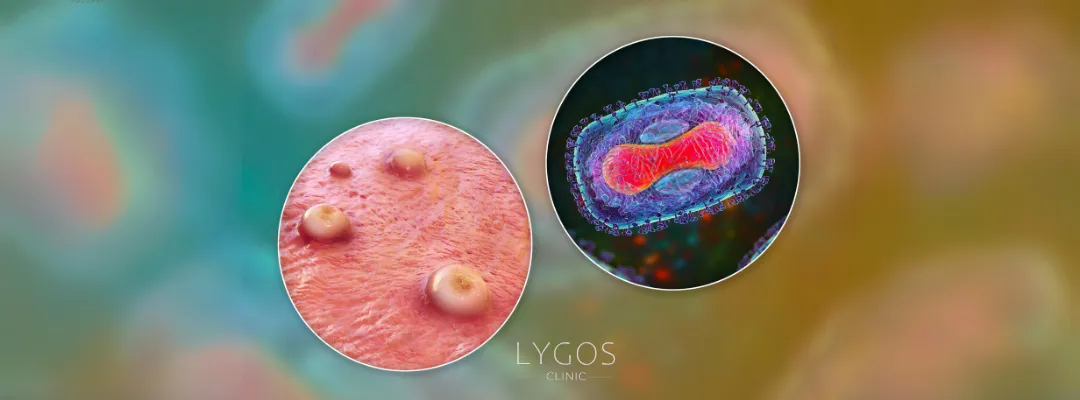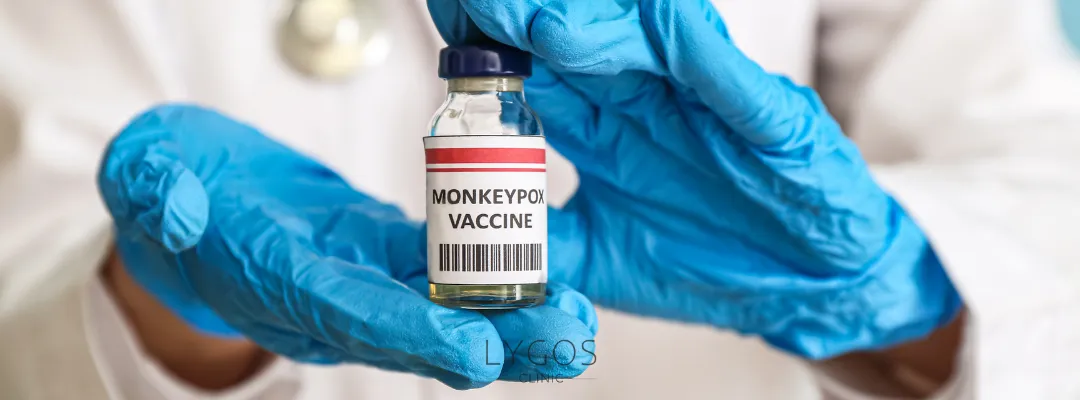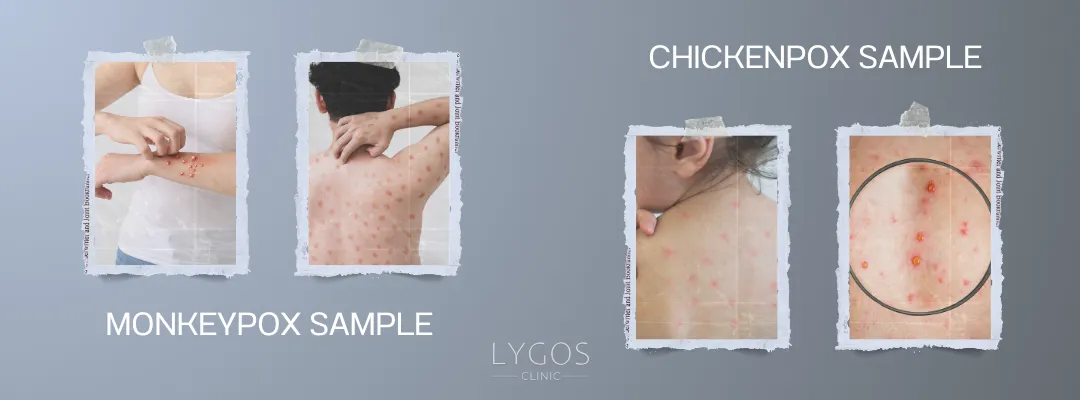What is (Mpox) Monkeypox Virus? | Symptoms and Treatment

Curiosities About Monkeypox Virus
Following the impact of Covid-19, another viral disease that has caused global concern is the recently recognized monkeypox virus (mpox). According to the World Health Organization (WHO), monkeypox is a contagious infection caused by this virus.
The disease can cause painful rashes, swollen lymph nodes and high fever. Most people recover completely from the disease, but in some cases it can be fatal. So, what is monkeypox virus? What are the symptoms of monkeypox virus? You can find the details in our article.
What is Monkeypox Virus?

Monkeypox virus is a zoonotic disease of the Orthopoxvirus family, mostly found in Central and West Africa. It is usually transmitted to humans from an infected person, through the animal’s skin lesions or through direct contact with bodily fluids. Symptoms include fever, headache, swollen lymph nodes, muscle aches and fatigue. Typical of the monkeypox virus, the rash usually starts on the face, hands, feet and mouth. Over time, they develop into fluid-filled lesions.
Also known as Mpox, this virus is in the same family as the variola virus that causes smallpox, but its effects are usually milder and rarely fatal. Although it is called “monkeypox”, the exact origin of the disease is unknown. However, it is thought to be carried by rodents and primates in Africa and transmitted to humans. Although the first human case was recorded in 1970, the world only recognized the virus with the outbreak in 2022.
While Mpox can be transmitted through close contact with infected people, sexual intercourse, contact with lesions or respiration, it can also be transmitted from animals to humans through blood, body fluids, contact with skin lesions, bites or scratches. The incubation period of monkeypox virus usually ranges from 6 to 14 days. However, it can also be between 5 and 21 days.
What are the Symptoms of Monkeypox Virus?

Monkeypox virus (mpox) can be transmitted from infected animals or from a person who has the virus. After contact with the virus, there is an incubation period, as with any infection. Symptoms usually appear 5 to 21 days after exposure to the virus. However, the most common symptoms appear between days 6 and 13. So, what are the symptoms of monkeypox virus?
Although monkeypox virus has similar symptoms to smallpox, which once caused major epidemics, there are some differences in its course. The first symptoms include high fever, head, back and muscle aches, swollen lymph nodes, intense fatigue, chills and shivering. In addition, skin eruptions in the form of small water-filled blisters, similar to chickenpox, are also a prominent symptom of the disease.
These rashes usually appear 1 to 5 days after the onset of the first symptoms. The rash usually starts on the face and spreads to other parts of the body over time. Some patients may also develop lesions in the genital area, eyes and mouth. The rash is similar enough to be confused with chickenpox. At first, the rash appears as water-filled blisters that crust over time and begin to heal.
The severity of the disease varies from person to person; in some cases, there may be hundreds of blisters throughout the body, while in others there may be fewer. In severe cases, the lesions may merge and cause a large-scale rash. Usually, the rash disappears within 2 to 4 weeks and the disease is cured. Monkeypox virus has a low mortality rate of 3-6%, which is usually higher among younger patients with comorbidities.
Is Monkeypox Virus Contagious?
Infection with monkeypox virus (mpox) is a highly contagious disease. While the virus is mostly spread by rodents such as mice and squirrels, wild animals also play an important role in its transmission to humans. The bite of an infected animal, contact with bodily fluids, touching skin lesions, consuming poorly cooked meat or using fur are among the ways the virus is transmitted to humans.
Monkeypox virus, which is transmitted to humans in this way, can spread from person to person and cause serious outbreaks. The rashes on the body of a sick person and the fluids in these rashes are carriers of the virus. Therefore, coming into contact with an infected person’s rash, sharing clothes, sheets or towels contaminated with the rash can spread the disease.
Furthermore, airborne droplets from coughs or sneezes of the infected person can also spread the infection. For this reason, people with skin lesions similar to monkeypox virus should contact a health facility as soon as possible, observing hygiene rules. Contact with individuals diagnosed with the disease should be minimized as much as possible and quarantine conditions should be applied if necessary.
How is Monkeypox Virus Treated?

There is no specific treatment for monkeypox virus. However, due to its similarity to smallpox, antiviral drugs developed against smallpox may be effective in combating this virus. Treatment for monkeypox virus mainly focuses on controlling and relieving the pain, skin sores and other symptoms caused by the virus.
If you are experiencing these symptoms, seeking immediate medical attention and early treatment can have a positive impact on the course of the disease. This, in turn, can minimize complications. Remember, prompt and informed intervention is critical both to protect your own health and to prevent the spread of the disease.
What is the Difference Between Monkeypox and Chickenpox?

Although monkeypox (mpox) and chickenpox present with similar symptoms, there are some key differences between the two diseases. Mpox belongs to the orthopox virus family, while chickenpox belongs to the herpes virus family, also known as the cold sore virus. This difference has important implications for the course and mode of transmission of both diseases.
Chickenpox is much more contagious than Mpox and spreads quickly. Chickenpox patients usually recover within two weeks, while monkeypox infection can take anywhere from 2 to 4 weeks. These differences also play an important role in the treatment of the two diseases.
How to Protect Against Monkeypox Virus?

Preventing the spread of monkeypox and controlling the outbreak requires surveillance, i.e. systematic observations of the virus. The rapid identification of new cases is vital. In this process, close contact with infected people is the most important factor that increases the risk of contracting monkeypox. Although monkeypox is a rare disease, some precautions should be taken to minimize this risk, especially when traveling.
First of all, vaccination is important, as vaccines developed for smallpox also protect against monkeypox. Staying away from people who show symptoms of the virus, especially avoiding skin contact, is also a major precaution. It is also important to avoid touching bedding, towels or clothing of a known infected person.
If contact with an infected person has occurred, it is essential to wash hands frequently with soap and water or use an alcohol-based hand sanitizer. Finally, avoiding animals that may carry the virus is also an important measure to reduce the risk of infection. With these simple but effective measures, you can protect yourself and others from monkeypox.


